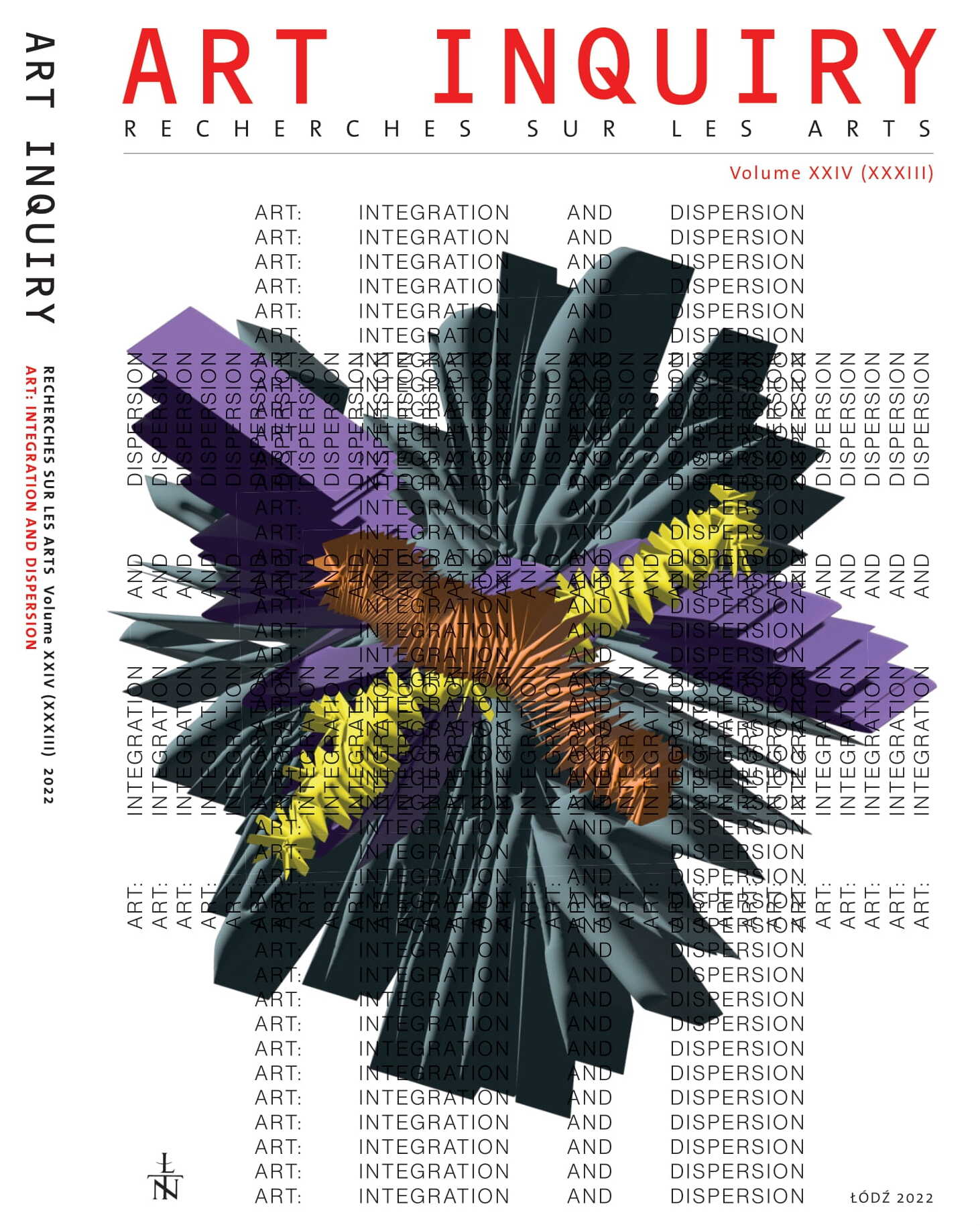VR Art
DOI:
https://doi.org/10.26485/AI/2022/24/5Keywords:
new media art, virtual reality, NetArt, Post-internet Art, virtual galleryAbstract
Compared to previous years, virtual reality has recently developed at an unprecedented speed. Philosophers have also noted the importance and philosophical dimension of Virtual Worlds, as well as their potential for the arts, as VR plays roles similar to physical reality and may be freely created. For years, artists have been interested in VR as a medium which is possible to use in the creative process and/or for exhibiting purposes. Several dimensions of VR art led me to distinguish, first of all, works functioning in physical space or hybrid works whose VR meanings are interpreted and developed as a phenomenon, and, secondly, VR works in their literal and fundamental meaning – art projects created with the intention to appear in virtual reality that is meant to be an exclusive space for their functioning. Additionally, you may have noted a few artworks or structurally linked projects inspired by the concept of the Metaverse. The paper examines selected examples of VR art and ontological components of their realities through which art penetrates and from which artworks emerge in ways that are not possible in the real world.
References
Altspacevr website on VR Art Gallery: https://account.altvr.com/worlds/1431153138357764130/spaces/1695051837675143670 (23.09.2022).
Balamir, Selçuk. More Than Dust: The Burning Man Festival: https://www.academia.edu/1478249/More_Than_Dust_The_Burning_Man_Festival. (23.09.2022).
Bostrom, Nick. “Are You Living in a Computer Simulation?”. Philosophical Quarterly, Oxford University Press, Vol. 53, No. 211, 2003, 243‐255.
Bourriaud, Nicolas. Postproduction. Culture as Screenplay: How Art Reprograms the World. Lukas & Sternberg, New York, 2002.
Chalmers, David. Reality+ Virtual Worlds and the Problems of Philosophy. W. W. Norton & Company, Inc., New York, 2022.
Deleuze, Gilles. Difference & Repetition. Translated by Paul Patton. Columbia University Press, New York, 1994.
Ford, Morie Jacquelyn, Williams Josh, Dozois Aimee, Luigi Donat-Pierre. “The Fidelity of ‘Feel’: Emotional Affordance in Virtual Environments.” ResearchGate, 2005: https://www.researchgate.net/publication/235016125_The_Fidelity_of_%27Feel%27_Emotional_Affordance_in_Virtu¬al_Environments (23.09.2022).
Gniady Maciej, “Słoń” in WRO 2019 festival: https://wrocenter.pl/pl/slon/ and information fromthe documentary published on Vimeo: https://vimeo.com/322584349 (23.09.2022).
Kooshki Razieh, Qaderi Vahid. In Between Nodes. Ars Electronica website: https://ars.electronica.art/newdigitaldeal/de/interface-cultures/, a documentary film on YouTube: https://www.youtube.com/watch?app=desktop&v=CLZZwaKeBuw (23.09.2022).
Manovich, Lev. “Post-Media Aesthetics”, 2000,: http://manovich.net/index.php/projects/post-media-aesthetics (23.09.2022).
Sheridan, Eric, Michael Ng, Lane Czura, Alexandra Steiger, Alex Vegliante, Katherine Campa¬gna. Framing the Future of Web 3.0 – Metaverse Edition. Goldman Sachs Research, December 10, 2021: https://www.goldmansachs.com/insights/pages/gs-research/framing-the-future-of-web-3.0-metaverse-edition/report.pdf (23.09.2022).
The website assigned to BRCvr: https://brcvr.org/ and the website of Protocol, where the descrip-tion of the Burning Man can be found: https://www.protocol.com/brcvr-2021-burning-man-vr (23.09.2022).
The 10 Principles of Burning Man: https://burningman.org/about/10-principles/ (23.09.2022). Weibel, Peter. “The Post-Media Condition”, Mute, 2012: https://www.metamute.org/editorial/lab/post-media-condition (23.09.2022).
Quaranta, Domenico. Beyond New Media Art. Link Editions, Brescia, 2013.



